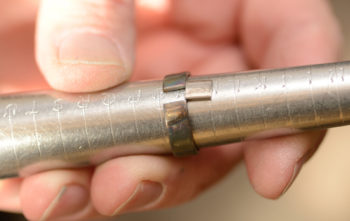Way We Do is excited to announce the roll-out of our new publishing process and version numbering function. While Way We Do has had version numbering for some time, these two features represent the second phase of Version Control and give you more control around authoring procedures.
What is Version Control?
In Way We Do, version control lets users with editorial access manage changes to a procedure over time. This includes maintaining the records of these changes, such as:
- which changes have been made
- who made the changes at each review
- why the changes were made
- when the changes were made
- the status of the procedure when the changes were made
- the version number of the procedure.
What’s changed?
- Default “Draft” status for new procedures. All new procedures now default to Draft status instead of Published.

- The publishing status filter. The new status filter now has three publishing modes available to users with editorial permissions in Way We Do.
- Published – displays procedures that have been published and are live for users.

- Editing – displays procedures still being edited, including those in Draft or Pending Review stages.

- Retired – displays procedures that have been retired and are no longer active.

- Published – displays procedures that have been published and are live for users.
- Editing and Retired views are now out of sight for general users. Published procedures will now only be available for general users. Procedures that are being edited will only be accessible to users with editorial permissions, i.e. Editors and Administrators.
- A temporary editable version of a procedure. When a procedure needs to be edited, you now have the option of creating a temporary version you can change, without your work affecting the live version. This temporary Draft/Pending Review version will only be accessible via Editing mode. When you’ve completed your changes, Way We Do merges the two procedures, publishing the result as the updated procedure.
- Version numbering to procedures. When you edit and save the changes you made to your procedures, Way We Do adds an incremental version number to each edit which has been saved and committed to the database. Once you’re ready to publish your procedure, you then have the option to manually enter a new version number, in case you’re transferring an existing procedure into Way We Do from Microsoft Word or another platform.

- The procedure history records. The new process lets those with editing permissions see the changes that have been made to a procedure over time. General users can only see the final published version.
 The new publishing process also allows Editors and Administrators to makes notes on the changes. These notes include what changes were made, why they were made, and which Editors or Administrators made them, giving you an audit trail of procedure updates.
The new publishing process also allows Editors and Administrators to makes notes on the changes. These notes include what changes were made, why they were made, and which Editors or Administrators made them, giving you an audit trail of procedure updates. 
- The search function. When you search for procedures in Way We Do, the results returned results will be the same as the mode you’re currently in. For example, if you’re in Published mode, your search will return only published procedures that match your search terms.

- Retire or Delete. While Way We Do has always given you the ability to retire procedures, it’s now only accessible through the Delete function. This then gives you the choice to permanently delete the procedure, or retire it until your next review.

Benefits to Way We Do subscribers
- An Audit trail. The new feature ensures you have access to the history of changes to your procedures. This history also means you can revert to previous versions at any time.
- Traceability. Each user in Way We Do has their own unique user profile, so you can trace who made which changes to your procedures, and when. This also includes any notes they make on why they made the changes they did.
- Restricted Access. Only Editors and Administrators can view procedures in Draft and Pending Review stages. General users won’t have access until a procedure has been approved and published.
- Review changes before publishing. Lastly, the new feature gives you the chance to review any changes to a procedure, before you commit to them fully.
What’s staying the same?
- Auto-saving. The auto-save function is still available. You’ll see the ‘Saving’ wheel appear appears at the top of the procedure you’re editing when auto-save is active. We’ve aimed to make auto-save more obvious so you can see when it’s working.
- The procedure life cycle. Procedures will still follow a life cycle in Way We Do, going from ‘Draft’ to ‘Pending Review’ and finally. ‘Published’. The review process is the same, and you can still invite other Editors to review procedures and give feedback, as well as approve publishing.
- The editing tools. The Edit toolbar is unchanged, as is the layout of the Way We Do editor.
- The active criteria. You can still add and change active criteria for your procedures, and the options remain the same.
- Manual Layout view. Your manual will have the same layout, and you’ll still have the option to set your procedures to appear in card or list view.
If you’d like some help navigating the new publishing process or have any questions, book some training time with one of our team at www.waywedo.com/training.
We’re always keen to hear what you think, so feel free to email us at support@waywedo.com to share your thoughts on this newest development. Equally, if you have any requests or ideas for new features you’d like to see, we’d love to hear from you.




